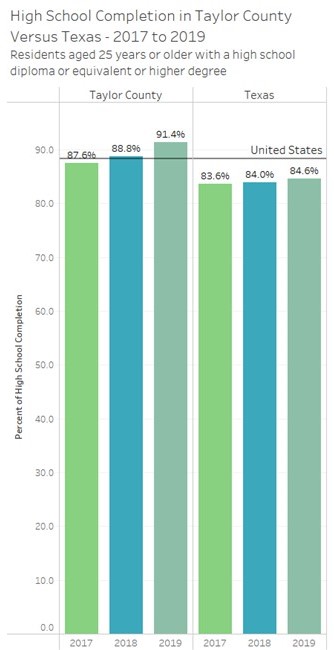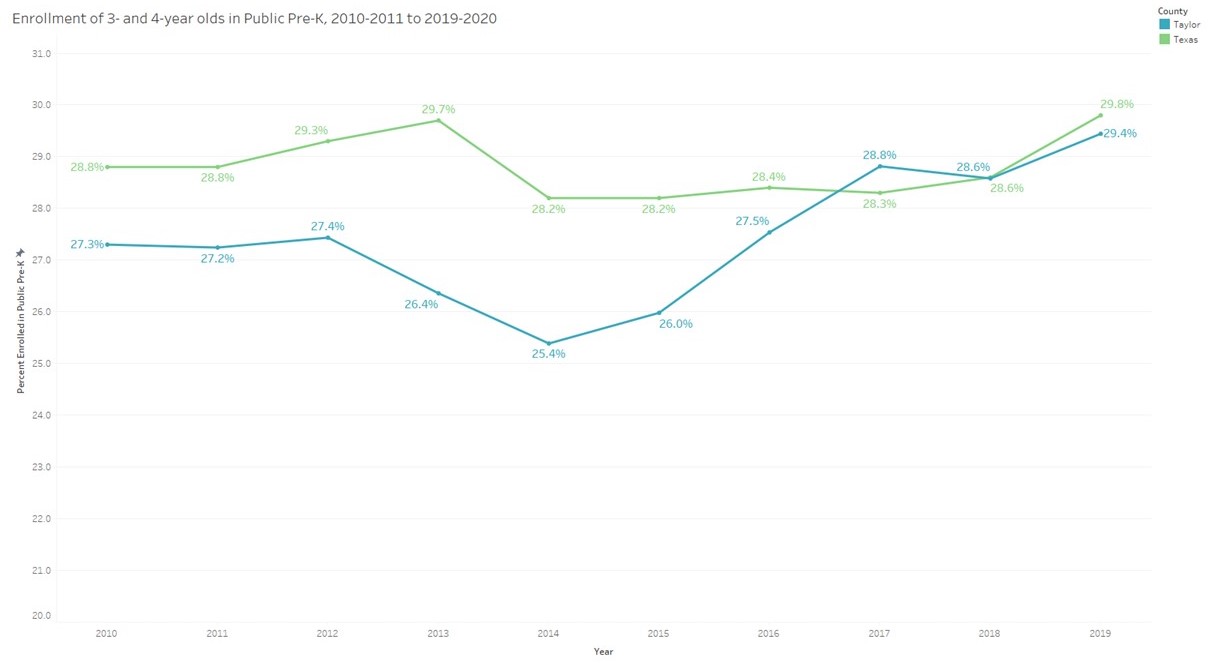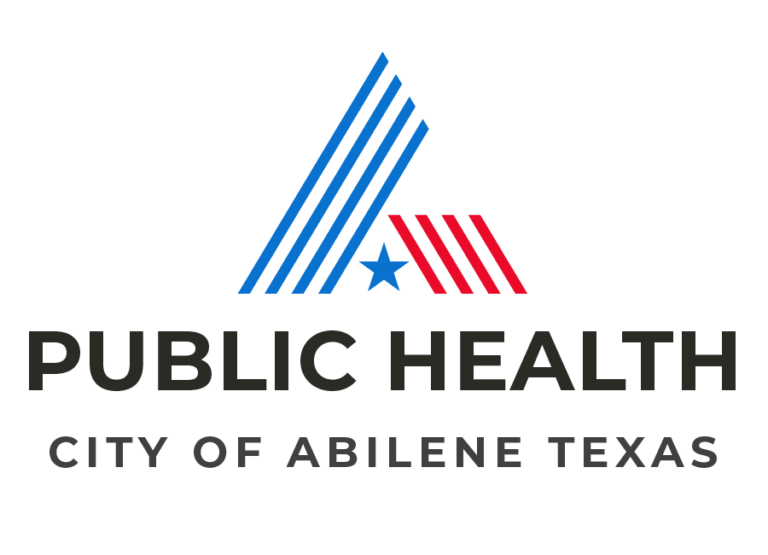Community Data
Educational Attainment
Quick Facts – Adults:
- In 2019, 91.4% of Taylor County residents over the age of 25 had at least a high school diploma.
- The 2019 American Community Survey estimated that:
- 31.1% of Taylor County residents only had a high school diploma.
- Just over 17% of Taylor County residents had a Bachelor’s degree.
- Less than 10% of Taylor County residents held a graduate or professional degree.


Education in Taylor County
In 2019, approximately 91.4% of Taylor County residents who were at least 25 years old had at least a high school diploma. This number is above both the national average of 88.3% and the average for Texas, which is 84.6%.
The census tracts with the highest high school completion rate correspond to the area just south of Abilene, and the census tracts with the lowest high school completion rates are in the northern part of the city. Information on high school completion rates were not available for the southern part of Taylor County.
Community Data
School Enrollment
Quick Facts:
- Less than 30% of Taylor County 3- and 4-year-olds were enrolled in Public Pre-K in 2019.
- Public Pre-K enrollment for both Texas and Taylor County is on an increasing trend from 2010 to 2019.
- In 2020, it was estimated that 5.8% of Taylor County’s total population was enrolled in preschool.
- Just under two-thirds of Taylor County’s total population (62.9%) in 2020 were enrolled in Kindergarten through Grade 12.

Why does the percentage of preschool enrollment matter?
Evidence suggests that children who are enrolled in early childhood centers for preschool for one or two years have better language, math, and literacy skills at the end of the program. There is also evidence that children who attend preschool have better classroom engagement and are more attentive in the classroom than students who did not attend preschool or prekindergarten. High-quality early childhood education programs have been associated with better academic performance and higher income in adulthood. Access to high-quality and affordable early childhood education programs is unequal in the United States, and it is not likely that low-quality early childhood education programs lead to the same long-term benefits of preschool.

Click for Data Sources
References
U.S. Census Bureau; American Community Survey (ACS), 2017 American Community Survey 1-Year Estimates, Table S1501. Retrieved from https://data.census.gov/cedsci/table?q=United%20States&t=Education&g=0400000US48_0500000US48441
U.S. Census Bureau; American Community Survey (ACS), 2018 American Community Survey 1-Year Estimates, Table S1501. Retrieved from https://data.census.gov/cedsci/table?q=United%20States&t=Education&g=0400000US48_0500000US48441&tid=ACSST1Y2018.S1501
U.S. Census Bureau; American Community Survey (ACS), 2019 American Community Survey 1-Year Estimates, Table S1501. Retrieved from https://data.census.gov/cedsci/table?q=United%20States&t=Education&g=0400000US48_0500000US48441&tid=ACSST1Y2019.S1501
U.S. Census Bureau; American Community Survey (ACS), 2019 American Community Survey 5-Year Estimates, Table S1501. Retrieved from https://data.census.gov/cedsci/table?q=United%20States&t=Education&g=0400000US48_0500000US48441,48441%241400000
KIDS COUNT Data Center. “Public Pre-kindergarten enrollment 3 & 4 year-olds in Texas”. The Annie E. Casey Foundation. Accessed April 4, 2022 from https://datacenter.kidscount.org/data/tables/3074-public-pre-kindergarten-enrollment-3-4-year-olds?loc=45&loct=2#detailed/2/any/false/1769,1696,1648,1603,1558,1484,1457,1228,1070,1022/any/8035,8034
Yoshikawa H, Weiland C, Brooks-Gunn J, et al. (2013). Investing in our future: the evidence base on preschool education. Society for Research in Child Development and Foundation for Child Development: Ann Arbor, MI and New York, NY. http://disde.minedu.gob.pe/bitstream/handle/20.500.12799/4015/Investing%20in%20Our%20Future%20The%20Evidence%20Base%20on%20Preschool%20Education.pdf?sequence=1&isAllowed=y
Early Childhood Education. Nea.org. Published December 2, 2021. Accessed April 11, 2022. https://www.nea.org/advocating-for-change/action-center/our-issues/early-childhood-education
Children Ages 3-5 Enrolled in Preschool or Kindergarten. Kidsdata.org. Accessed April 11, 2022. https://www.kidsdata.org/topic/767/preschool-kindergarten/table#fmt=1172&loc=2,127,1657,331,1761,171,2168,345,357,324,369,362,360,2076,364,356,217,354,1663,339,2169,365,343,367,344,366,368,265,349,361,4,273,59,370,326,341,338,350,2145,359,363,340&tf=108
Friedman-Krauss A, Barnett S. Access to High-Quality Early Education and Racial Equity. National Institute for Early Education Research. 2020; 1-3. https://nieer.org/wp-content/uploads/2021/02/Special-Report-Access-to-High-Quality-Early-Education-and-Racial-Equity.pdf. Accessed April 11, 2022.


